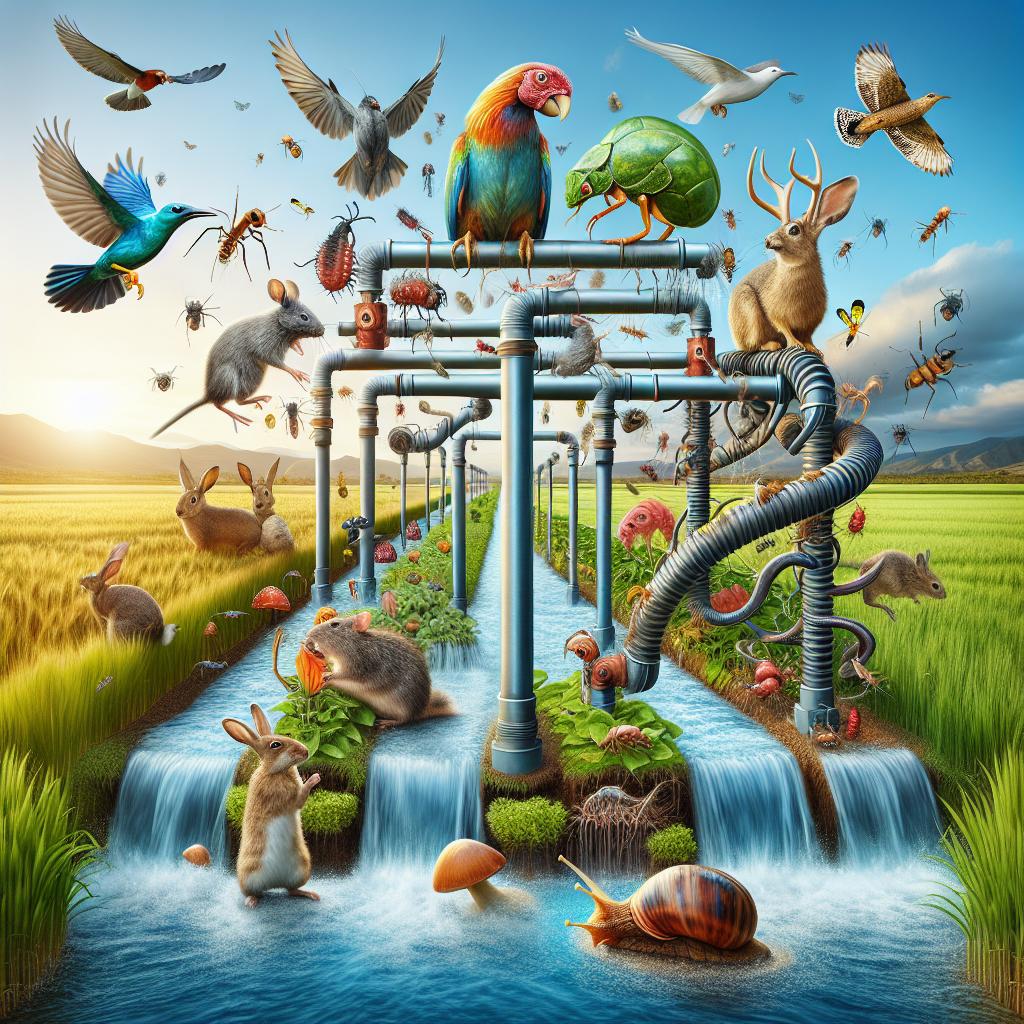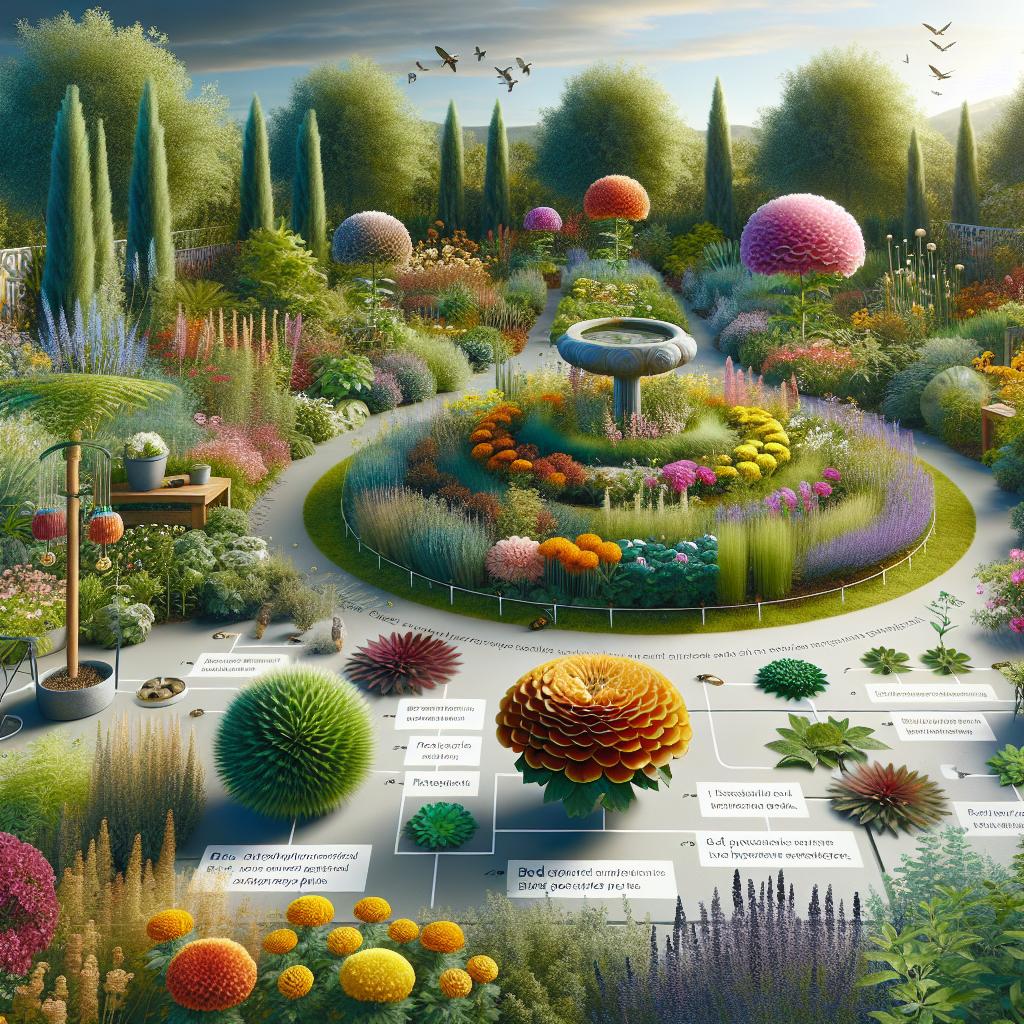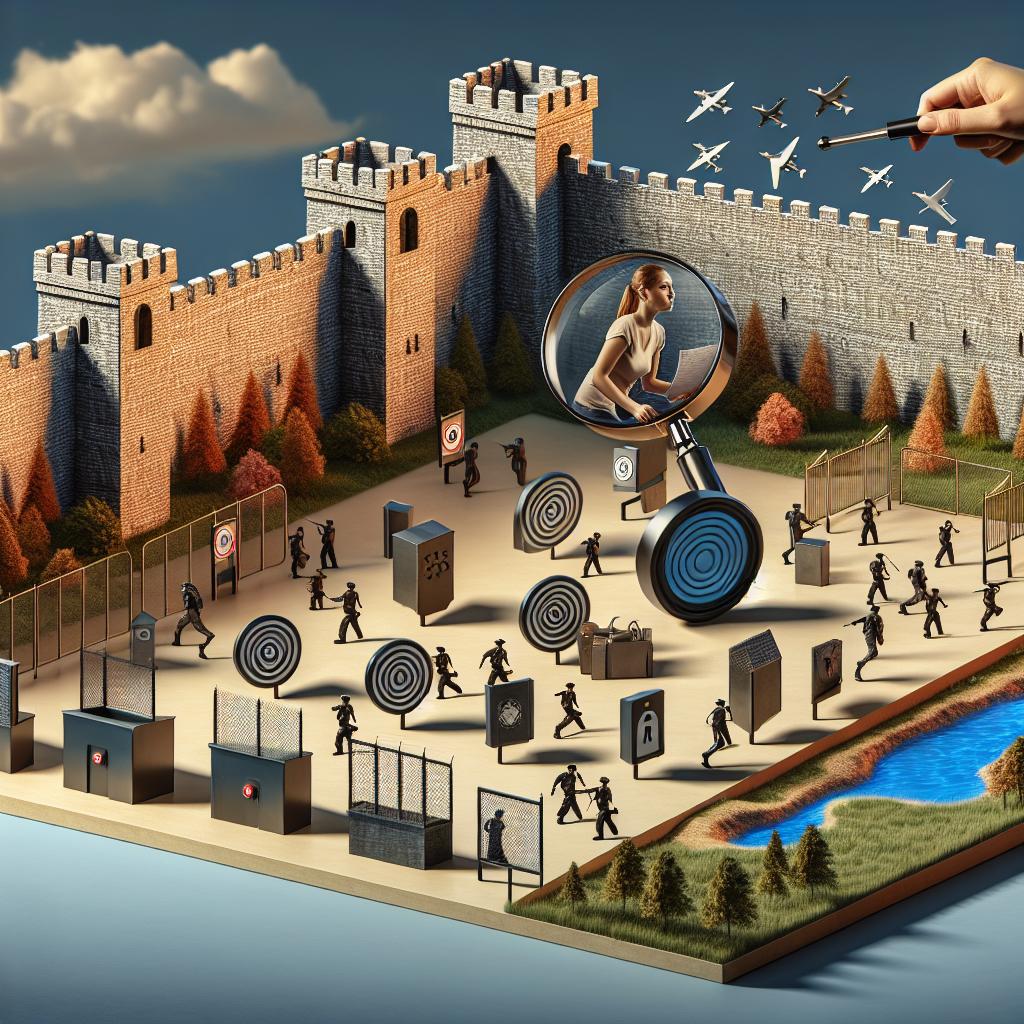This post may contain affiliate links which means I may receive a commission for purchases made through links. Learn more on my Private Policy page.
Introduction:
Imagine this: you’ve spent countless hours nurturing your garden, investing time, effort, and a little bit of your heart into creating a lush oasis that bursts with colors and life. But just as you’re ready to revel in the fruits of your labor, you discover that pesky critters have decided to join the party—gobbling up your plants and wreaking havoc on your carefully laid irrigation system. Pests and wildlife can pose a serious threat to your garden’s wellbeing, but fear not! Safeguarding your irrigation system doesn’t have to be a daunting task. In this pleasant guide, we’ll explore the best ways to protect your verdant paradise from unwelcome visitors. With a little creativity and a sprinkle of enthusiasm, you can keep your garden flourishing and your peace of mind intact. Let’s dive in and discover the tricks of the trade that will help you defend your oasis against nature’s unexpected intruders!
Understanding Common pests and Wildlife Threats to Your Irrigation System
Understanding the various threats posed by pests and wildlife is crucial for maintaining the integrity of your irrigation system. Rodents, such as gophers and mice, can gnaw through pipes and tubing, leading to water loss and costly repairs. Insects like termites and ants may also create nests that disrupt your systemS functionality. Additionally, larger wildlife, including deer and raccoons, are known to tamper with irrigation setups, either out of curiosity or in search of water.Protecting your system requires awareness of these potential invaders, as well as strategic measures to mitigate their impact.
To effectively safeguard your irrigation infrastructure, consider implementing the following protective techniques:
- physical Barriers: Install mesh fencing or wire netting around exposed piping.
- Pest Deterrents: use natural repellents or sonic devices to keep wildlife at bay.
- Regular Inspections: Conduct frequent checks for signs of damage or pest activity.
- Proper Landscaping: Maintain a clear area around your irrigation system to deter pests from nesting nearby.
To better visualize the types of pests and wildlife that could threaten your irrigation system, refer to the following table:
| Pest/Wildlife | Potential Threat |
|---|---|
| Rodents | Gnawing through pipes, causing leaks |
| Insects | Nesting in valves, leading to blockages |
| Deer | Breaking hoses or siphoning water |
| Raccoons | Disturbing components, causing malfunctions |

Smart Strategies to Create a Pest-Resistant Landscape
Creating a pest-resistant landscape not only enhances the aesthetic appeal of your garden but also ensures the longevity of your irrigation system. Start by incorporating drought-resistant native plants that are naturally adapted to the local surroundings. These plants require less water and are better equipped to withstand pests. Additionally, consider using ground covers like clover or creeping thyme, which can act as natural deterrents against unwanted insects while reducing weed growth and maintaining soil moisture.
Another effective strategy is to implement companion planting, where specific plants are grown together to naturally repel pests. For example, planting marigolds alongside vegetables can deter nematodes and aphids, protecting your crops without chemicals. Moreover, integrating physical barriers, such as netting or row covers, can offer protection against birds and larger wildlife, ensuring your irrigation system remains unobstructed.Here’s a speedy reference chart of plants to consider in your pest-resistant landscape:
| Plant Type | Pest Defended Against |
|---|---|
| Marigolds | nematodes, Aphids |
| Basil | Flies, Mosquitoes |
| Lavender | Moths, Fleas |
| Rosemary | Cabbage Moths, Spider Mites |

Choosing the Right Barriers and Deterrents for Effective Protection
When it comes to protecting your irrigation system from pests and wildlife, selecting the right barriers and deterrents can make all the difference. Fencing is one of the most effective measures; consider using materials such as woven wire or electric fences tailored for your specific needs. For smaller animals, a simple mesh barrier can do wonders. You might also want to explore barrier fabrics,which can provide a physical shield against foraging creatures while allowing necessary moisture and sunlight to pass through.
In addition to physical barriers, natural deterrents can be incorporated for a more lasting approach. Plants like marigolds and mint not only beautify your garden but also repel pests with their strong scents. Another option is utilizing motion-activated sprinklers that startle animals and keep them at bay without causing harm.Below is a table summarizing various barriers and their effectiveness against different types of pests:
| Barrier Type | Effective Against | Notes |
|---|---|---|
| Fencing | Deer, Rabbits | height and material are key factors. |
| Mesh Barrier | Rodents, Insects | Ensure proper installation to avoid gaps. |
| Natural Deterrents | Pests, Insects | Use companion planting techniques. |
| Motion-Activated devices | All wildlife | Safe and humane option. |

Maintaining Your Irrigation System: Best Practices for Long-Term Safeguarding
to keep your irrigation system functioning effectively over the years, implementing a few best practices can make a significant difference. Regularly inspecting your system for signs of wear and tear helps catch issues before they escalate. Be vigilant about:
- Checking for leaks in hoses or pipes.
- Cleaning filters to ensure water flow is not obstructed.
- Monitoring sprinkler heads to ensure they are properly aligned and distributing water evenly.
Additionally, the periodic application of protective measures can act as a deterrent against unwanted pests and wildlife. Consider utilizing physical barriers such as fences or nettings, which can keep larger animals at bay.Furthermore, incorporating eco-friendly repellents will help dissuade unwanted visitors without harming the environment. Here are a few options to consider:
| Repellent Type | Effectiveness |
|---|---|
| Castor Oil | Moderate |
| Garlic Spray | High |
| Hot Pepper Wax | Very High |
The Conclusion
As we wrap up our journey through the lush landscapes of pest prevention and wildlife protection for your cherished irrigation system,remember that safeguarding your garden is just as significant as nurturing it. By implementing the strategies we’ve explored, you’re not only ensuring the health of your plants but also creating a welcoming environment where nature can thrive harmoniously.
Whether it’s through choosing the right barriers, employing natural deterrents, or simply being more vigilant, every small step you take makes a big difference in keeping your irrigation system pest-free. Now, armed with knowlege and creativity, go forth and let your garden flourish with the robust vigour it deserves! Remember: a healthy ecosystem is a beautiful one, and with a little effort, you can enjoy a thriving oasis, free from the pesky interruptions of the critters that might threaten it. Happy gardening! 🌻🌿💧
This post may contain affiliate links which means I may receive a commission for purchases made through links. Learn more on my Private Policy page.

